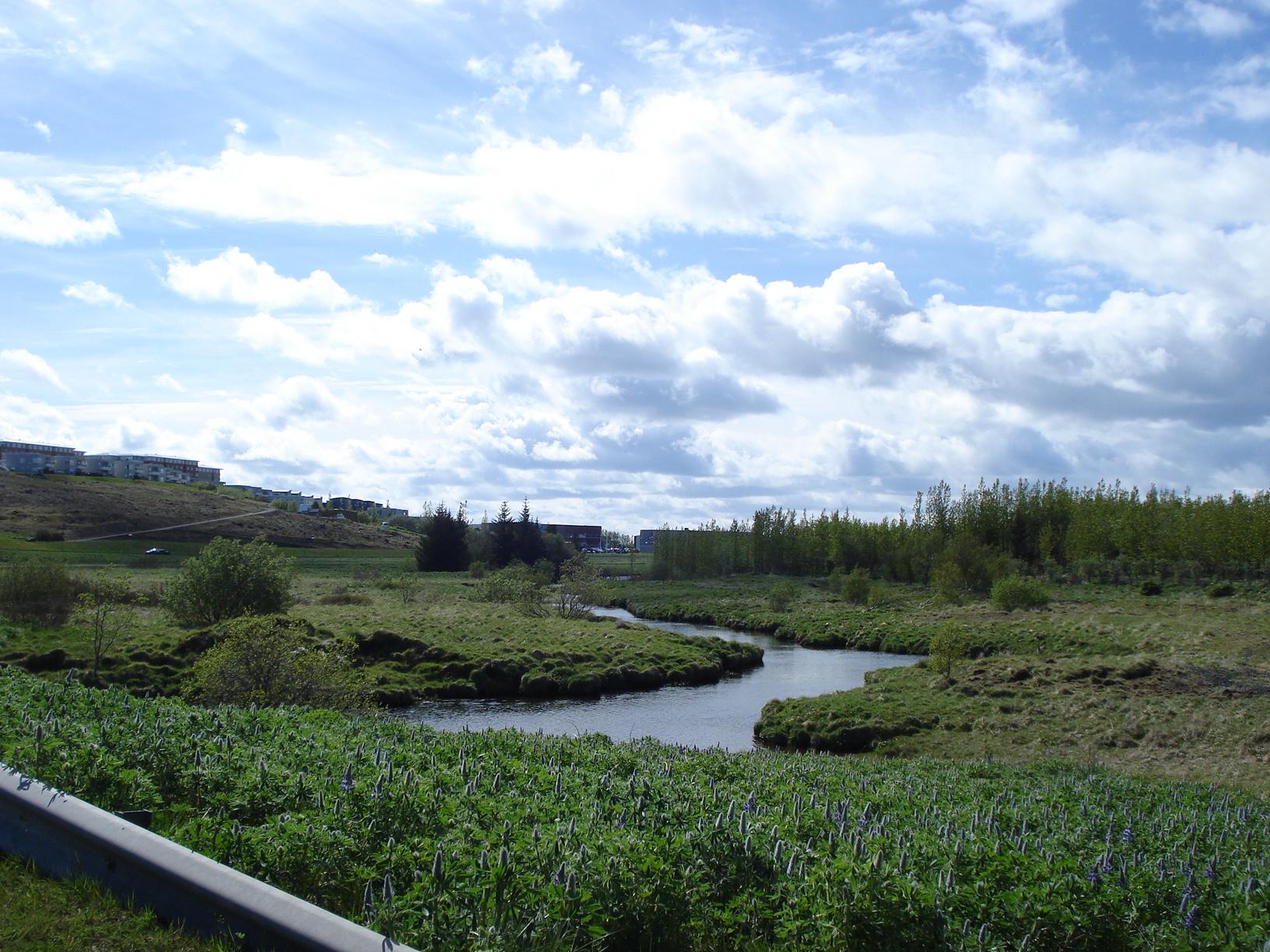Úlfarsárdalur
Outdoor recreation areas
Úlfarsárdalur
113 Reykjavík

About the valley
Úlfarsárdalur is a large outdoor recreation area south of Úlfarsfell. Úlfarsá flows westward through the valley from Hafravatnsvatn to the sea in Blikastaðakró. The valley is long and wide with extensive lowlands, especially near the river. A residential area of the same name lies in the northwest part of the valley, with Grafarholt to the south. The area's use for outdoor recreation is growing rapidly. The Lambhagi nursery in the westernmost part of the valley is a prominent feature.
Basic information
Transportation:
Public bus: Routes 18-26. Stops: Reynisvatnsvegur – Katrínarlind - Úlfarsbraut
You can find: Walking paths - Biking paths - Sports area - Forestry - Agriculture - Bird life - Protected area
Flora and wildlife
Grassland dominates Úlfarsárdalur, especially along the banks of Úlfarsá. Cultivated fields are prominent, including old fields and those still used for grazing or hay production. Wetlands were once common but have mostly been drained and converted to fields. Some small marshy areas remain, with unusually abundant marsh vegetation. A forested area lies north of Úlfarsá near a summer cottage area. Yellow willow is abundant along Úlfarsá due to the absence of grazing. Large flowering plants like meadowsweet, water avens, and yarrow are also prominent on the riverbanks.
Úlfarsá is a salmon river, with both salmon and trout runs. Blackflies are common along the river and are an important food source for fish and birds. Bird life in Úlfarsárdalur is diverse, especially near the river, with breeding grounds for moorland and wetland birds. Greylag geese, mallards, and teals are common breeding species in wetland areas near Úlfarsá. Common moorland birds like golden plovers, common snipes, whimbrels, redshanks, and meadow pipits breed widely in the area, especially in the eastern part. Ptarmigans breed in various hilly areas around the river, mainly away from settlements. Starlings and redwings are also abundant, as in many parts of Reykjavík. Minks are common in Úlfarsárdalur, drawn by the rich food source of Úlfarsá.
Úlfarsá and its banks are on the Nature Conservation Register and are subject to Reykjavík City's neighborhood preservation policy.